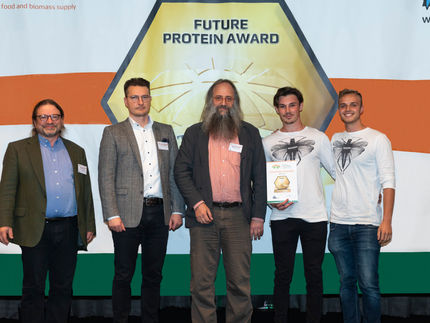Cultured meat’s new secret ingredient: aloe vera
New study introduces Aloe Vera as a natural, sustainable scaffold for cultured meat production. By repurposing Aloe vera, researchers cultivated fat-like lipid chunks that could enhance the taste and texture of alternative proteins. Combined with a single-use bioreactor, this approach offers a scalable, cost-effective solution for cultured meat production using a sustainable agricultural byproduct.

Symbolic Picture
computer generated picture
A new study published in npj Science of Food reveals a breakthrough in cultured meat production, using Aloe vera as a natural, scalable, and cost-effective scaffold. This research was the result of a collaboration between Dr. Sharon Schlesinger and Prof. Oded Shoseyov from the Robert H. Smith Faculty of Agriculture, Food and Environment. The project was funded by the Good Food Institute and the Israeli Innovation Authority.
Cultured meat production faces significant challenges in scalability, cost efficiency, and structural integrity. This breakthrough offers a sustainable solution by leveraging Aloe vera, a widely available agricultural byproduct, as a biocompatible scaffold that promotes cell adhesion, proliferation, and extracellular matrix formation. By incorporating oleic acid, the team successfully encouraged the formation of fat-like tissue—or "lipid chunks"—which could improve the sensory experience of plant-based meat substitutes.
The research also highlights a novel bioprocessing approach, integrating Aloe vera scaffolds into a macrofluidic single-use bioreactor (MSUB). This technology, developed at Reichman University by Dr. Jonathan Giron and his team, facilitates cost-effective, large-scale production, making cultured meat more commercially viable while reducing reliance on animal-based materials. Unlike synthetic or polymer-based scaffolds, Aloe vera’s natural structure retains high liquid absorption properties, creating an optimal environment for cell growth without requiring additional reinforcement.
“Aloe vera has long been known for its medicinal and nutritional benefits, but our study shows it also holds great potential for sustainable food production,” said Dr. Sharon Schlesinger. “By repurposing this natural byproduct into a biocompatible scaffold, we are taking a significant step toward scalable, cost-effective cultured meat production that could help address global food security and environmental challenges.”
Aloe vera’s FDA-approved status as a food additive further supports its potential for industrial application in cultivated meat. With global Aloe vera production reaching up to 500,000 metric tons annually, its use as a renewable, edible scaffold aligns with the growing demand for sustainable food solutions.
This pioneering work not only enhances the feasibility of cultured meat but also presents new opportunities for food technology, tissue engineering, and the alternative protein industry. The team at Hebrew University hopes this innovation will pave the way for more accessible and environmentally responsible protein sources, shaping the future of food production.
Original publication
Most read news
Original publication
Gilad Gome, Benyamin Chak, Shadi Tawil, Itai Rotem, Ivana Ribarski-Chorev, Jonathan Giron, Oded Shoseyov, Sharon Schlesinger; "Cultivation of bovine lipid chunks on Aloe vera scaffolds"; npj Science of Food, Volume 9, 2025-2-25
Topics
Organizations
Other news from the department science

Get the food & beverage industry in your inbox
By submitting this form you agree that LUMITOS AG will send you the newsletter(s) selected above by email. Your data will not be passed on to third parties. Your data will be stored and processed in accordance with our data protection regulations. LUMITOS may contact you by email for the purpose of advertising or market and opinion surveys. You can revoke your consent at any time without giving reasons to LUMITOS AG, Ernst-Augustin-Str. 2, 12489 Berlin, Germany or by e-mail at revoke@lumitos.com with effect for the future. In addition, each email contains a link to unsubscribe from the corresponding newsletter.




























































